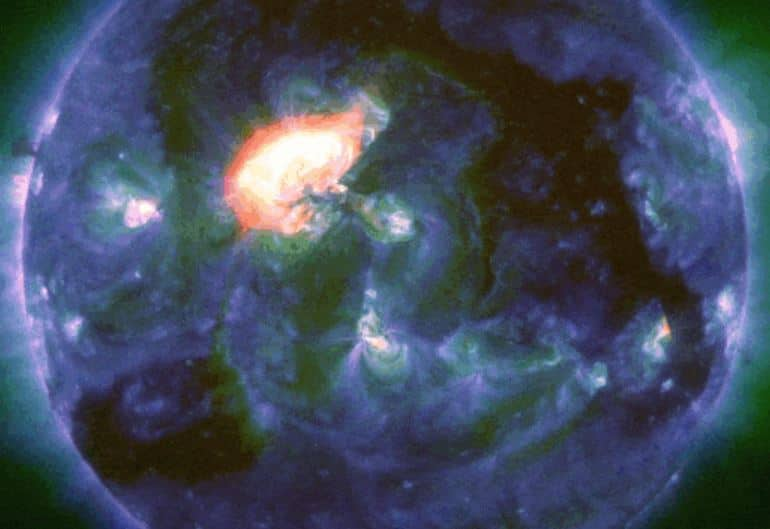A high-speed solar storm, triggered by the , is currently buffeting Earth’s magnetic field, with space weather experts warning of possible G4-class geomagnetic storm conditions today. The eruption, which occurred on , was unleashed by and is now affecting Earth’s space environment in real time.
According to both NASA and NOAA, an unusually strong coronal mass ejection (CME) is the source of this disturbance. This rare consensus from the world’s top space agencies underscores the seriousness of the unfolding solar storm.
Sunspot AR4100 erupted spectacularly on May 31, producing a Although it narrowly missed being classified as an X-class flare, the most intense category, its long duration and sustained energy made it significantly impactful. The flare lasted over three hours, giving the CME enough force to travel directly toward Earth at an astonishing speed of 1,938 km per second.
Satellite imagery from the Solar and Heliospheric Observatory (SOHO) captured a striking halo CME, indicating that the solar material was ejected in all directions, with Earth directly in its path.
The CME reached Earth’s magnetosphere on June 1 and is continuing to cause geomagnetic disturbances today. If the magnetic fields within the CME align southward (opposite to Earth’s), the resulting G4-class storm could significantly disturb satellite operations, navigation systems, and even terrestrial power grids.
The storm’s peak impact is expected on June 2, and it may lead to:
If conditions are favorable, auroras could be visible much farther south than usual — including across northern Europe, Canada, and several northern U.S. states.
Increased radiation and charged particles can affect communication satellites and GPS signals.
Intense storms can induce currents in long transmission lines, stressing power grids.
Although it doesn’t surpass the legendary G5 storm from May 2024, this is easily one of the strongest solar events of the current Solar Cycle 25, making it a valuable learning opportunity for space weather researchers and a fascinating phenomenon for skywatchers.
Each geomagnetic event offers new insights into how our planet responds to the Sun’s outbursts. Understanding the nature of these space storms is critical for protecting vital infrastructure, forecasting future solar threats, and planning for upcoming solar maximum conditions expected around 2025-2026.
For now, scientists remain vigilant while skywatchers around the globe may be treated to a stunning celestial display. Just remember to keep your cameras ready and your GPS systems double-checked, the Sun is putting on quite a show.
Stay informed on all the , real-time updates, and follow all the important headlines in and on Zee News.










